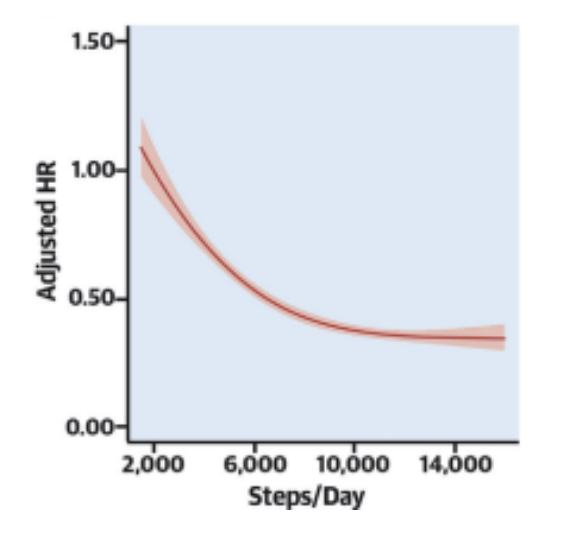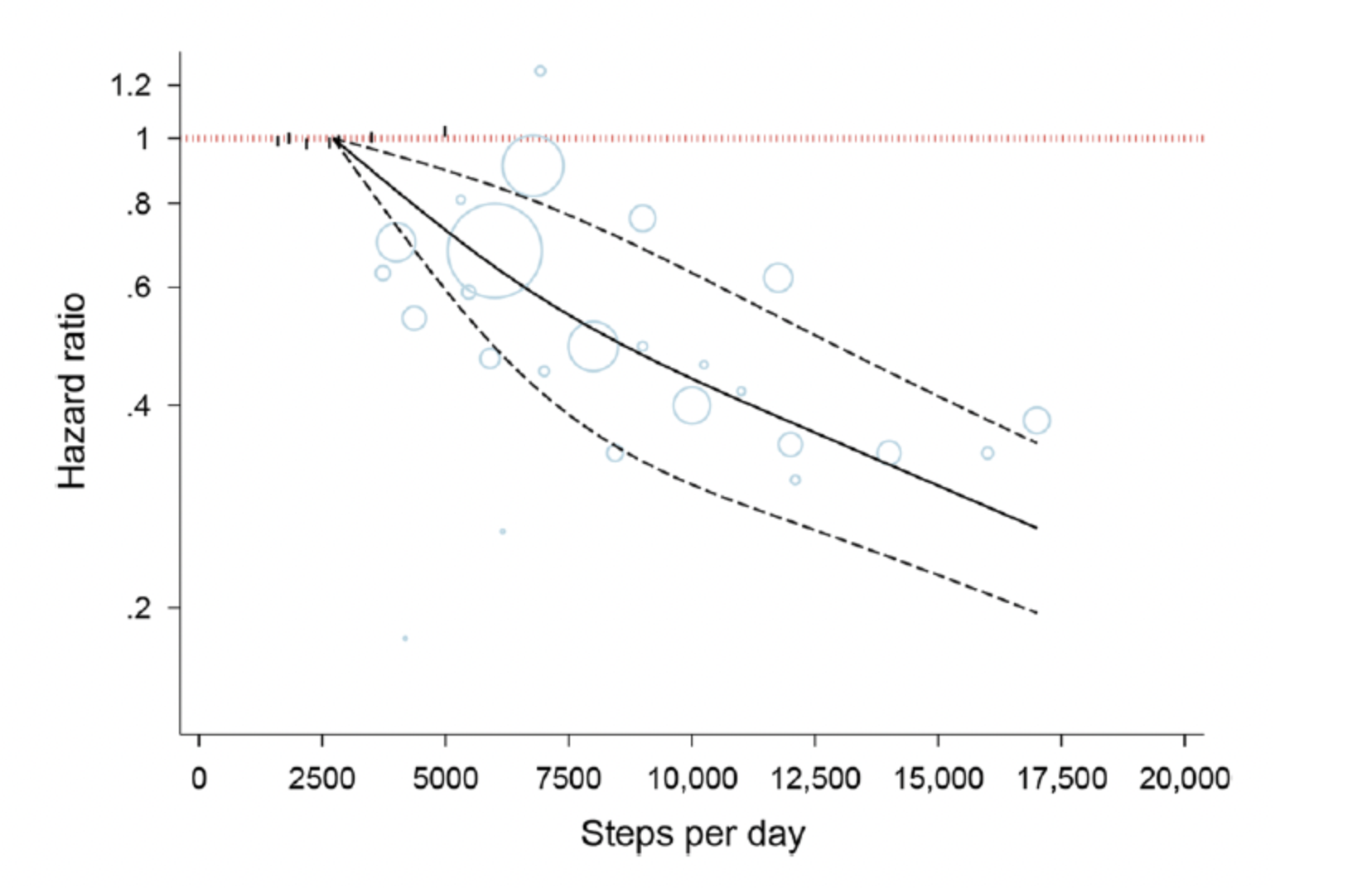Walk more (and walk fast!) to live longer

About a year ago Pete made a promise to the world (and more importantly his kids) that he was going to get a dog. This was his personal take home point from a previous article to encourage himself to walk more.
While he didn’t deliver on that promise (‘Daddy, where’s that puppy you promised us!!’), he did deliver some convincing evidence that getting your 10,000 ish steps in a day was a more important risk factor than obesity and smoking for improving your odds of living longer.
Let that sink in. Walking may be the single most important known variable we can change in our health to improve longevity.
If you missed that article, I’ve got a 2.0 version along a similar vein, with some added weight to the conclusions and additional considerations to include in your walking game.
A recent meta-analysis published in the Journal of Cardiology included 11 prospective trials with 111,309 people. That’s 4 more trials and an additional 83,000 people compared to the meta-analysis Pete wrote about just over a year ago. This body of walking for longevity evidence is accelerating fast.
This recent meta-analysis included adults, with a mean age of 62 years of age, who wore either pedometers or accelerometers (on the wrist or hip) for 7 days to measure their steps. All included studies tracked all-cause mortality and some also tracked major acute cardiovascular events (ie strokes and heart attacks).
4854 of the 111,309 people died during a mean follow up period of 5 and a half years.
And the results are clear, but slightly different from the 2021 review.
Look at the graphs below comparing the 2021 Meta Analysis (first graph) and the 2023 meta analysis (second graph).


In 2021 the data found an almost linear relationship between number of steps and decreased risk of dying during the study period. But in 2023 the additional data (remember 4x as many participants included) shows a steeper slope (more benefit) at lower steps and shallower (less benefit) at high step ranges. The graph on the right shows a more curvilinear risk reduction.
The direction of benefit is still clear, the more steps the better for improving your odds. But there is more to gain from adding steps to your day if your baseline is lower than if your baseline is higher.
This makes intuitive sense and is sometimes referred to as the law of diminishing gains. We see this in many areas of physiology like caloric restriction for weight loss and strength gains in newbie exercisers. The early benefits of an intervention can be huge, but sustaining those results is generally unfeasible.
So unfortunately the 12-13% reduction in all cause mortality for every 1000 steps added reported by the 2021 meta-analysis may be a bit too simplistic.
But on the optimistic side, there is still benefit to be had in adding steps anywhere up to approximately 10,000 steps. And if you are quite sedentary and just getting started in a walking program, you have the most to gain!
For those that need a little data to support these conclusions. When the authors split the data into three groups (called tertiles in this study) going from the lowest tertile (median steps 3166 per day) to the intermediate tertile (median 6000 steps per day) showed the biggest reduction in all cause mortality risk (adjusted hazard ratio of .64 compared to the lowest tertile). And progressing to the highest tertile (median 10,000 steps per day) results in an additional reduction in all cause mortality risk (adjusted hazard ratio of 0.5 compared to the lowest tertile).
Quite simply if you shift from a low step count to a high step count your risk of dying (during an approximate 5 year period if you are approximately 62 years old) is cut in half!
And these are adjusted hazard ratios, meaning many other important health variables have already been adjusted for in the statistical analysis including age, BMI, smoking and alcohol status, education levels and relevant comorbidities.
It is impossible to highlight how huge this is!! We just don’t see this level of benefit on a concrete end point measurement like death in an approximately 5 year period from any other intervention.
To further dig into the data take a look at the following heat map. This heat map splits the data into round thousand step increments. From this you can see what your added risk of dying will be if you drop your steps from say 8000 down to 5000. Conversely you can predict what your reduced risk of dying will be if you increase your steps from say 3000 to 8000.
For what it’s worth the authors state the optimal dose of steps per day is approximately 8800 for all cause mortality, but there certainly is no reason not to aim higher if you are motivated to do so!
And what about the speed of walking?
Intermediate step cadence (63 steps/min) and high step cadence (88 steps/min) were associated with additional reductions in all cause mortality (aHR of .67 and .62 respectively) when compared to low step cadence (29 steps/min) even after being adjusted for step count (aHr of .78 and .79 respectively).
So for the first time we have convincing evidence that both step count and step rate are both independently beneficial for health and their reductions combined are additive. The authors propose that cadence might be a proxy for fitness and additional cadence requires a greater oxygen consumption.
We know that V02 max is independently related to longevity, so increasing cadence and thus improving the fitness challenge may be tapping into improvements in V02 max.
Get out there and get after those steps, and pick up the pace…your future health may very well depend on it.
